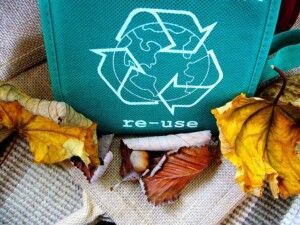How You Can Promote Reuse In Your Business

The U.S Environmental Protection Agency (EPA) reports that America’s landfills are filled with a whopping
139.6 million
tons of waste annually. Businesses are undoubtedly one of the most significant generators of this waste, so it is crucial for them to modify their purchasing and current processes to reduce waste volume. Reusing materials is one of the best ways your company can lower the amount of waste it contributes to landfills every year, making it more sustainable. Here are some ideas to promote reuse in your company.
- Use envelopes and packaging again
It is vital to note that your average envelope begins as a tree or several trees. Additionally, transforming raw materials into envelopes demands top-notch equipment and renewable and non-renewable resources. Consequently, reducing your need for new envelopes through re-usage lessens the waste that ends up in landfills and the resources required to produce them. You can reuse envelopes sent to your company by detaching the glue that holds them together. Then, fold these envelopes in the opposite direction to obtain a clean area where you can write any relevant addresses.
You can also use masking tape to conceal envelopes’ original addresses and write new ones with a black marker. Furthermore, a reported 91% of all packaging waste ends up in landfills or the environment. Therefore, consider reusing your packaging waste to make your enterprise more sustainable. For this, you can use packaging like cardboard boxes, jiffy bags, and wooden pallets again, as long as they are durable. Similarly, you can keep old bubble wrap to reuse as packaging, so keep this in mind.
- Use a VoIP system
Voice over Internet Protocol (VoIP) is an excellent communication technology that enables you to make voice calls with a broadband internet connection instead of an analog phone line. This technology is also highly flexible, allowing you to readily integrate it into your present office hardware through software development. As such, your company can continue using its original telephones and connect them to its VoIP system, allowing a rapid change over from one system to another. On the other hand, traditional landline systems require regular upgrades because they lack features like video calls and screen sharing that modern businesses need. These upgrades are costly and often wasteful. Replacing a telephone system requires removing critical equipment and wiring, which eventually ends up in landfills where it will take several years to completely break down. Consequently, consider searching for the best
VoIP phone system provider
for your business to ensure that you can reuse your telephone system and avoid contributing to landfill waste. These IP phones are wire-free, and it takes just one phone call to your provider to upgrade your VoIP service.
- Refill your toner and ink-jet cartridges
You have likely thrown away a printer cartridge more than once a month if you do a lot of printing daily in your business. However, numerous experts agree that doing this isn’t always the best option; you can save good money by getting your empty printer ink cartridge refilled instead of purchasing a new one. In many cases, you can save up to 70% of the price of a new cartridge if you choose to refill instead of buying new ones. Additionally, refilling your printer cartridge instead of putting it in the trash will help the environment. For starters, refilling diminishes the overall amount of garbage that ends up in landfills. Also, remember that many printer ink cartridges are made from non-biodegradable materials like plaster. It would take hundreds of years for even the smallest ink cartridges to disintegrate. Therefore, refilling your cartridges will reduce soil destruction as well as air, land, and water pollution.
- Donate your old office furniture and used equipment
It isn’t uncommon to get rid of various old furniture and equipment around your office occasionally. However, you can donate these unwanted items to various non-profits, schools, and charitable organizations that reuse them instead of sending them to landfills. Donating your furniture also ensures that fewer raw materials are required to produce new ones, preventing unnecessary pollution. Furthermore, donating your
office furniture
and equipment ensures that these items can be used throughout their entire life cycle. Many consumers get rid of items that can still be used because they are no longer deemed aesthetically attractive. Therefore, donations ensure that things you don’t consider useful or pleasant don’t end up in landfills simply because you don’t fancy them anymore. Instead, you can make your waste items a gift for someone who needs them, promoting longer usage.


